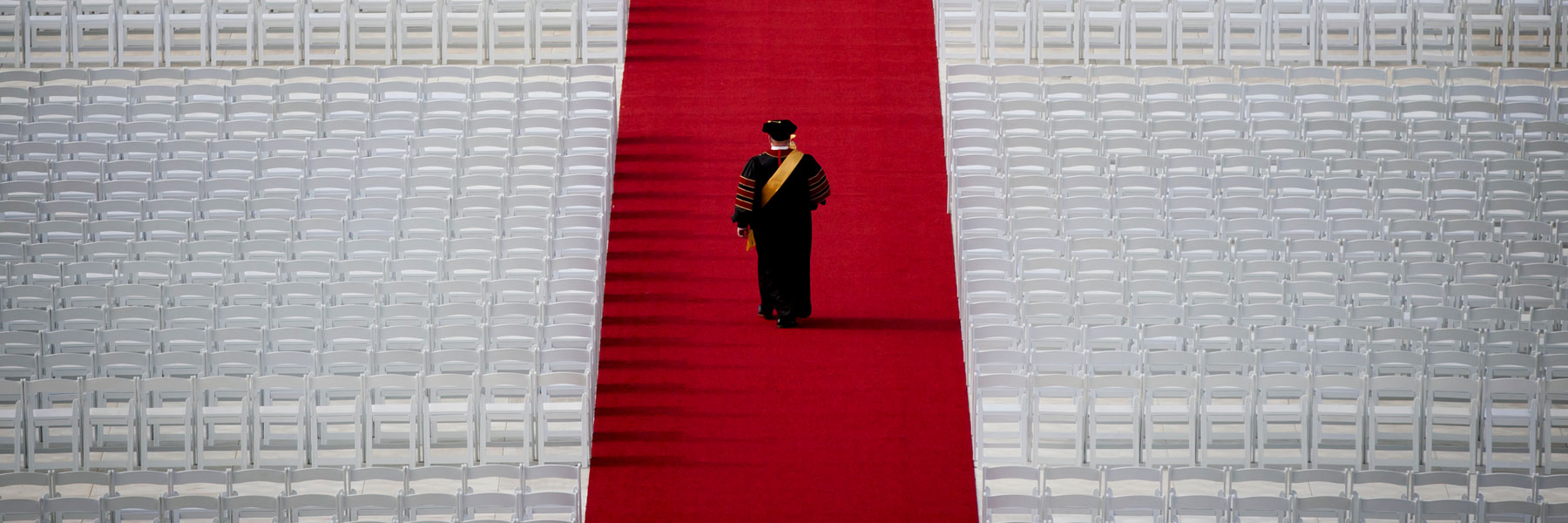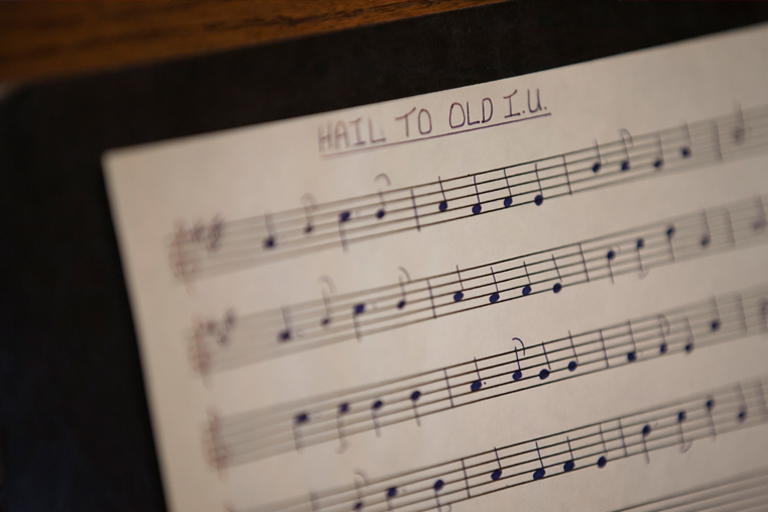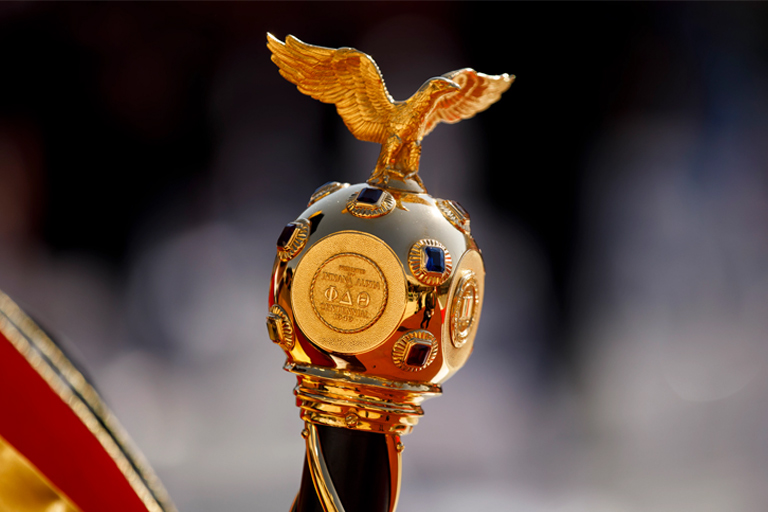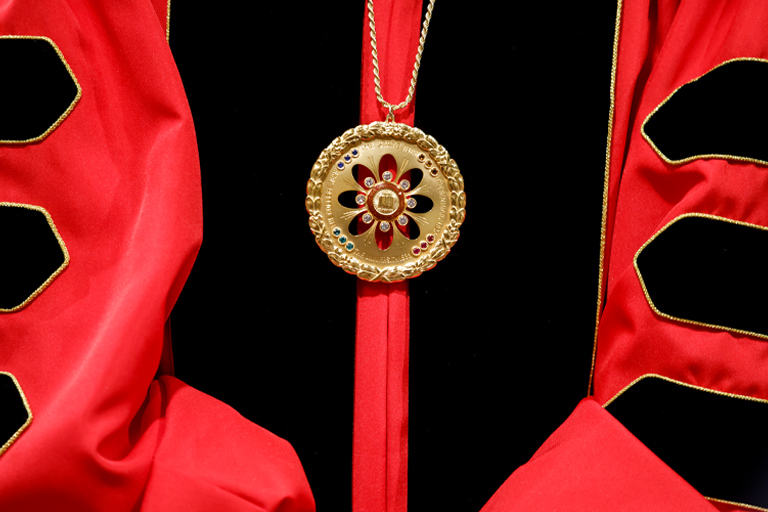It's Not Just for Show
The music, formalities, and regalia all create a beautiful show, but the customs of Commencement are not just for show. There is a rich history to each component of the ceremony, even the cap and gown. Learn more about these customs and develop an appreciation for the traditions that connect you with the many graduates before you.
The Sounds of Commencement
Music sets the tone for an event and the songs of Commencement are grand and meaningful, and likely very recognizable.
“Pomp and Circumstance” is actually a part of several military marches written by composer Sir Edward Elgar. The section often played during the procession is from March 1 in D, written in 1901. It was first played at a graduation ceremony in 1905 at Yale University to honor Elgar when he received an honorary doctorate from the school.
The official Alma Mater song, “Hail to Old I.U.”, is a feature at all kinds of university events, from formal ceremonies to basketball games. The words were written by J. T. Giles and set to a Scottish tune in 1893 so the IU glee club would have a school song to perform at a competition.
The Sights of Commencement
The decorations and regalia of Commencement create a dramatic scene but they are also steeped in tradition.
The procession is led by the grand marshal, who bears the ceremonial Mace symbolizing the authority of the university. Other marshals include head marshals and faculty marshals.
The banners of each school are carried with pride in the procession to lead the graduates to their seats. You’ll also see the banners lined up across the stage. Each banner represents the mission and values of the school.
The Mace and the president’s Jewel of Office are included in all formal processions at Indiana University. These symbols include colors and images that represent significant events in the history of the state and university. Each was presented by fraternity chapters celebrating their centennials: the Jewel of Office was presented by Beta Theta Pi in 1945 and the Mace by Phi Delta Theta in 1949.
The caps worn by most graduates are called mortarboards and are adorned with tassels reflecting their school. Tassel colors are typically standard across the United States. The mortarboard style comes from a centuries-old tradition started at Oxford.
The traditional gown started several centuries ago as well, when students in medieval universities would organize themselves into guilds and wear long gowns most likely for warmth. Some scholars added a hood to cover their shaved heads (mostly members of a church order), and the hood evolved into a cape to wear in foul weather. Though the styles changed slightly over the years, the traditions of graduation apparel are widely known and strictly followed.
The gowns for bachelor’s and associate degree recipients have a closed front and open sleeves. The master’s degree gown has extremely long, closed sleeves (with a slit at the wrist for the arm to extend through) and the end of the sleeve is square with an arc cut away just above the bottom. Doctoral gowns have velvet panels down the front and voluminous bell-shaped sleeves, on which there are three velvet bars.
Master’s degree candidates also wear hoods, which are actually stoles edged in velvet and lined in satin that flow down the wearer’s back. The color of the velvet edging reflects the academic discipline while the satin lining reflects the institution granting the degree. Thus, Indiana University hoods are lined in cream and crimson. Doctoral hoods (worn by many faculty members) use the same system of color symbolism but are longer and wider than master’s hoods.
The color of the honor cords worn by graduates indicate their level of distinction. Cream and crimson cords indicate highest distinction; cream cords indicate high distinction; crimson cords indicate distinction. The distinction is also recorded on the individual’s diploma.
The Speakers of Commencement
Commencement speeches often capture the challenges and opportunities of the moment and inspire graduates to move forward with courage and optimism.
Since 1892, the Commencement address and speaker have been a part of the graduation ceremony at Indiana University. The invited speakers are accomplished in their field and sometimes have a connection to the university as an alum or friend of the university. Learn more about the history of Commencement speakers and see the list of speakers from 1892 to today.
Student speakers have been part of Commencement ceremonies even longer, as several students would speak as part of a days-long event. Today, one senior is selected to voice the experiences and expectations of the graduates. The student speaker sits on the stage as part of the platform party and represents the graduating class. See how to apply to become the student speaker at Commencement.
Watch previous Commencement ceremonies to be inspired by past speakers and get excited for your big day.




